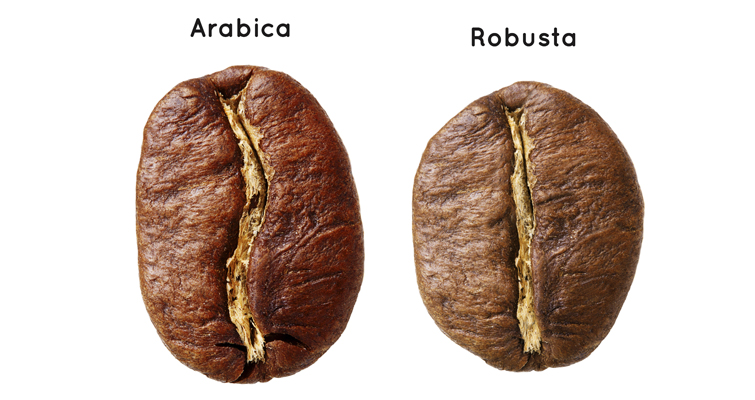
Arabica Beans vs Robusta Beans
Whats the Difference?
A lot of factors influence the way your coffee tastes. One of the biggest — the type of coffee tree the beans come from. The coffee species of overwhelming importance are Coffea Arabica and Coffea Canephora. In general terms, coffee is divided into two main types, Arabica and Robusta, but botanically speaking, Arabica has two main varieties, Typica and Bourbon, and the most common form of Canephora is the variety Robusta. However, even within a single varietal of coffee, different and often unpredictable growing conditions and process methods will produce a varying flavour profile in the resulting cup, and a successful coffee bean may exhibit a completely distinct set of characteristics when grown in one location as compared to another. The two varieties differ in taste, growing conditions, price.
ARABICA
The name “Arabica” isn’t in and of itself an indicator of final beverage quality. Arabica coffee is shade grown in the mountains above 600 meters, and therefore more difficult to cultivate and harvest than plantation grown Robusta. Arabica tends to have a smoother, sweeter taste, with tones of chocolate or sugar, and often fruits or berries. Their acidity is higher, with that winey taste that characterizes coffee with excellent acidity. Arabica coffee is more popular around the world than Robusta – it basically has double the amount of sugar, as well as 60% more lipid content.
ROBUSTA
Robusta, however, has a stronger, harsher taste, with a grain-like overtone and peanutty aftertaste. They contain twice as much caffeine as Arabica beans, and they are generally considered to be of inferior quality compared to Arabica. Some robustas, however, are of high quality and valued especially in espressos for their deep flavor and good crema. Robusta is used by some coffee producers because the plants, being hardier and easier to grow and harvest produce a cheaper, though less desirable bean.
Robusta: 1.8 – 4.0% caffeine, Arabica: 0.9-1.4% caffeine
Arabica coffee is preferred for straight consumption. Robusta is excellent for blends (especially for espresso types). It provides body to the beverage but is not pleasant when drunk alone. The taste of Arabica coffee beans alters among varieties and growing regions.
The coffee you like is a very personal thing. You may find that you really prefer the all-arabica blends, or you may feel comfortable with something less, just because you like it. So, don’t get too caught up in the arabica versus robusta argument. Many great espresso blends use robusta for it’s strength and cream.
